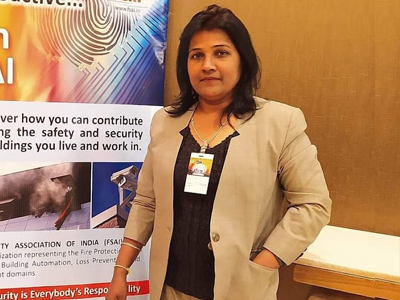Quality Mechanical Ventilation Systems = Quality Air for All

-by Arindam Bhadra
Breathing comes so naturally to us that we are sometimes barely conscious of it. But, bad air quality can affect us in many ways—from mere discomfort to loss of life. Since a lot of us spend time indoors nowadays, how do we ensure that the air we breathe is safe?
This is where the Mechanical Ventilation System comes in; it plays a major part in our daily lives by
• Circulating the air in buildings so that all occupants are able to enjoy good air quality.
• Continuously replacing the air from the space with fresh, outdoor air .
• Removing heat from the space and also possible contaminants, such as products of respiration, bacteria, odors, products of combustion, building materials and furnishings, etc.
The role of the Mechanical Ventilation System in Fire Protection
The Mechanical Ventilation System is also a key component of fire safety. In the event of a fire, smoke and polluted air can spread rapidly throughout the building and in most incidents, death and injuries usually result from smoke inhalation rather than the heat from the flames.
This system reduces the risk factors by ensuring that the evacuation routes are safe and secure for people to leave the building.
Who is responsible for the Mechanical Ventilation System?
Thus, according to the requirements from 1) the Code of Practice for Fire Precautions in Building 2018 (Fire Code 2018) - Chapter 7 and 2) the Code of Practice for air-conditioning and mechanical ventilation in building (SS 553: 2016+A1: 2017), Building Owners and Council Members are responsible for installing the Mechanical Ventilation System to.
• Provide air ventilation in the building where natural ventilation is not a suitable or effective smoke control measure.
• To purge or prevent smoke build-up in certain key aspects of the building, especially where means of escape are critical in the event of fire i.e. staircases.
Additional Requirements:
• The common frequency of inspection, testing and maintenance of the Mechanical Ventilation System in buildings, as per regulations, is monthly.
• In any building of which habitable height exceeds 24m, any internal exit staircases without provision for natural ventilation shall be pressurized to comply with the requirements.
• In a building comprising more than 4 basement stores, any exit staircase connected to fire fighting lobby in basement stores shall be pressurized to comply with the requirements.
Basic features of the Mechanical Ventilation System.
The system is made up primarily of 4 types of mechanical ventilation system that you will usually hear or see in use:
Jet Fan (High and Low speed)
• Also known as impulse or induction fans.
• Usually used at underground carparks and multi-storey carparks where due to exhaust gases, the air is severely contaminated with carbon monoxide, nitrogen oxide and LPG. The Jet Fan is use to quickly extract the polluted air from the area.
• Supports the natural flow between the supply air and extract air zones, without ducts
Fresh Air Fan
Supports the inflow of fresh air from the external environment into the building.
Exhaust Fan
Supports the extraction of polluted air or smoke out of the area and/ or building, usually installed with ducts.
Pressurization Fan
Supports the pressurization of staircases that does not allow for natural ventilation of purging smoke out of the stairway that is the emergency escape route for the building.
Where is the Mechanical Ventilation System found?
• Car parks
• Kitchens
• Bathrooms, toilets and locker rooms
• Exit facilities
• Fire Command Centre
• Engine driven pump room
• Generator room
• Spaces involving the use of flammable and explosive substances





.png)







